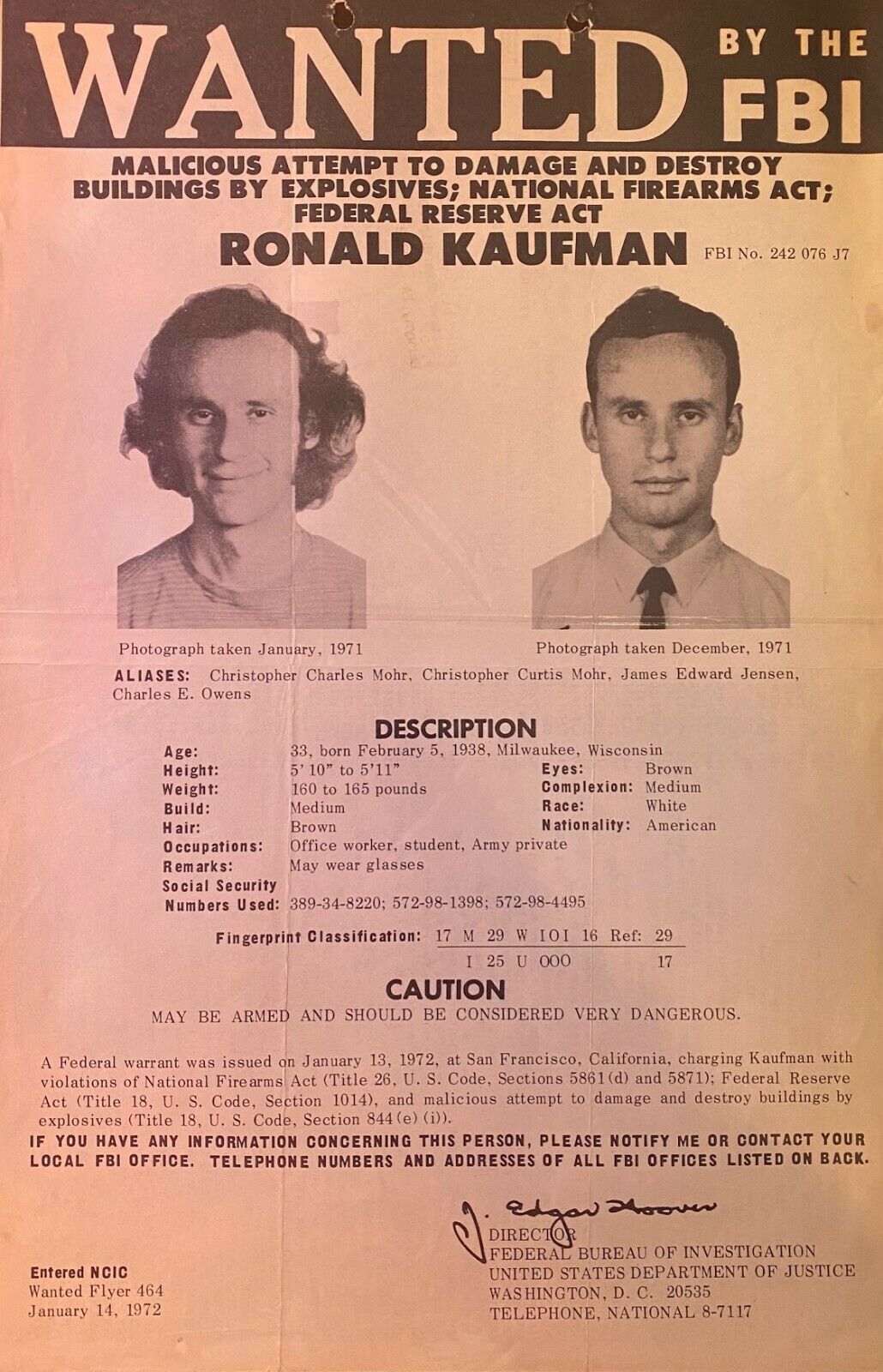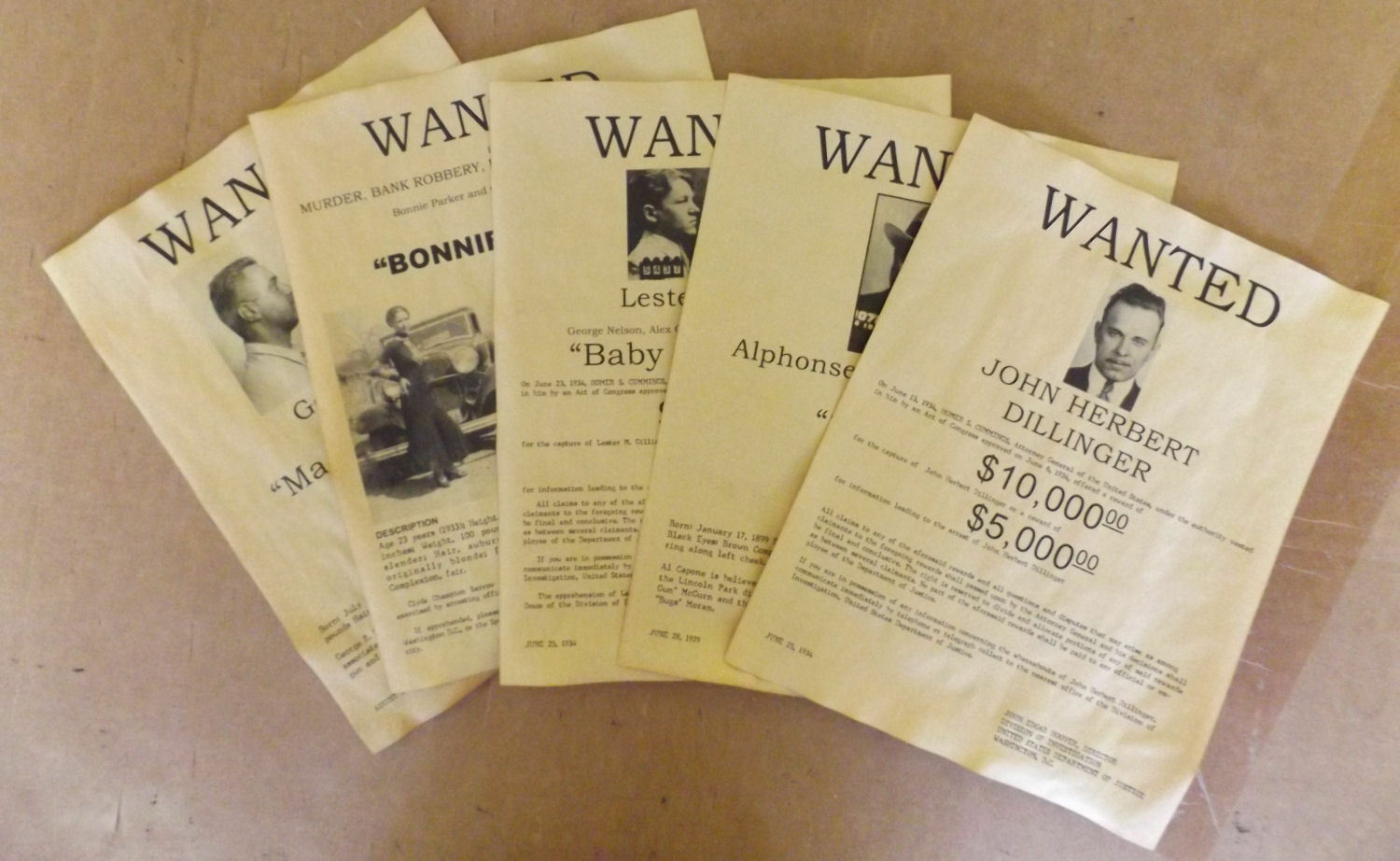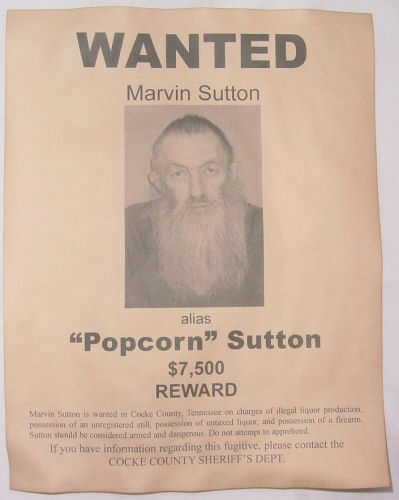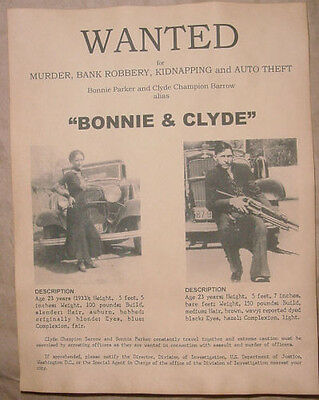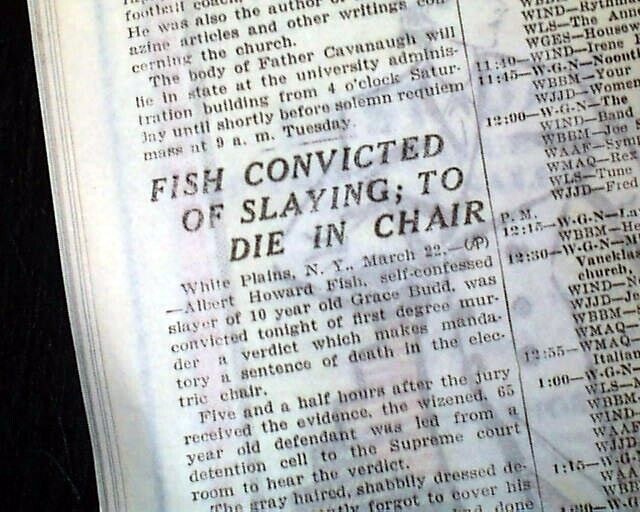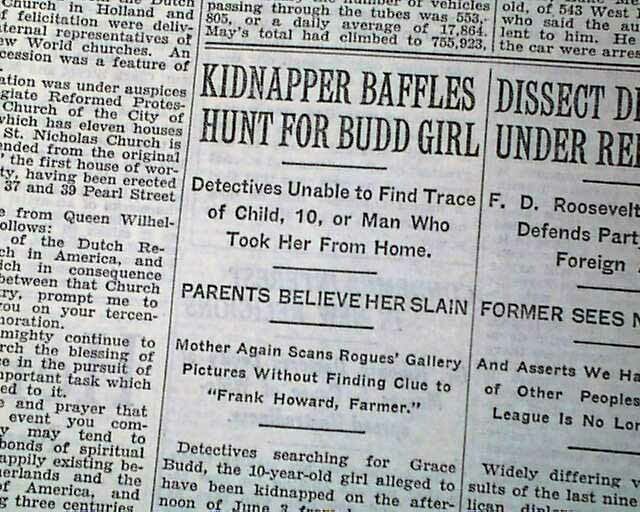-40%
Ronald Kaufman Movement in Amerika Students & Democratic Society & Bomber
$ 12.67
- Description
- Size Guide
Description
I've been collecting FBI Wanted Posters for over 50 years.This unique large poster is for a rare
American anti-Vietnam War radical,
Dwight Alan Armstrong
in the 1970's.
Free Shipping to the 48 States and DC.
A tracking # will be provided.
Prefer payment via Credit Card but PayPal is acceptable.
A former fugitive Army private,
Ronald Kaufman
who holds a Ph.D. in psychology was named in 1972 as the man who had placed
time bombs in the safe‐deposit boxes of three banks on Wall Street and six others in Chicago and San Francisco was arrested on July 17, 1986
In a warrant issued in the Northern District Court in California, he was identified as Ronald Kaufman, 33 years old. The Federal Bureau of Investigation said he had enlisted in the Army in St. Louis on Aug. 10, 1971, using the name James Edward Jensen, after having been in the Army from February, 1956, through February, 1958.
Under the name Jensen, Kaufman was said to have left Fort Polk, La., on Dec. 9, 1971, with orders to report in 30 days to Fort Jackson in South Carolina.
He never showed up. He was last reported in Berkeley, Calif., two to four weeks ago.
It is understood that the Federal manhunt has centered in Chicago, where Kaufman, using the name Christopher Charles Mohr, reportedly rented an apartment for a brief time last fall.
In a statement issued in Washington, J. Edgar Hoover, director of the F.B.I., said the suspect had been traced through his fingerprints.
Four prints are said to have been found on applications for safe‐deposit boxes that Kaufman reportedly filled out here, in Chicago and in San Francisco, and two fingerprints are said to have been found on the inside of a bomb planted in the Wells Fargo Bank in San Francisco.
In addition, the F.B.I. said the hand printing on the applications was similar to that on a number of letters that were sent to the news media last week. The letters described the locations of the bombs and said that similar explosives could be planted in the future “
to kidnap property and offer it in exchange for the freedom of our people.”
The F.B.I. said that Kaufman had attended conventions of
Students for a Democratic Society
in 1966 and 1967, al though persons familiar with the conventions insisted they had no recollection of him.
However, it was learned that Kaufman was a close friend of
Abbie Hoffman, the Yippie leader,
and that he had lived with him in Chicago during the summer of 1968.
The F.B.I. also said, without explanation, that the suspect had used the names Christopher Curtis Moore and Charles E. Owens, and that he had rented safe‐deposit boxes in San Francisco last July under the name Christopher Charles Mohr.
Earlier it had been disclosed that similar safe‐deposit boxes had been rented under the same name in New York and Chicago.
Mr. Hoover said that Kaufman, if convicted on all counts,
could face a sentence of 81 years in prison
and ,000 in fines.
The Federal warrant for his arrest charged him with 12 counts—three with attempting to damage the banks, three with using the mail to make threats, three with possession of the bombs, and three with making false statements in applications for the safe‐deposit boxes.
Explosion in September
The only actual explosion ever linked to a man who called himself Mohr, however, took place on Sept. 7 in a safe‐deposit box in the San Francisco branch of the Bank of America.
That explosion, which was not publicized at the time, was investigated by agents of the Department of the Treasury. The F.B.I. became involved in the case on Jan. 7, when the letters were received that suggested the bombs were part of a political plot.
The letters—sent by a group that called itself the “
Movement in Amerika
”— specified that the bombs were in the following banks:
New York—The Marine Mid land Grace Trust Company, 140 Broadway; the First National City Bank, 107 William Street, and the Manufacturers Han over Trust Company, 40 Wall Street.
Chicago—The Continental Illinois National Bank, 31 La Salle Street; the First National Bank of Chicago, First National Plaza, and the Northern Trust Company, 50 South La Salle Street.
San Francisco—The Crocker Citizens National Bank, 1 Montgomery Street; the Wells Fargo Bank, Market and Montgomery Streets, and the Bank of America, Market and New Montgomery Streets.
Bombs Had Time Clocks
When the police in the three cities investigated, they found bombs, with about a half‐pound of powder, attached to battery driven calendar clocks that were to be used as detonators.
A letter sent to The Berkeley Tribe, an underground news paper, described the timers on the bombs as having a cycle of 217 clays, or seven months— that is, the bombs could be planted seven months before their detonation.
The F.B.I. did not disclose how the fingerprints had been traced to Kaufman. It is known that the bureau maintains two sets of fingerprint files—one for known or convicted criminals, and one for civil cases that have come to its attention. But in any case, Kauf man's fingerprints would have been on file as a member of the military.
July 18, 1986 Arrest
A man who has been wanted for 14 years on charges that he planted bombs in banks in New York, Chicago and San Francisco has been arrested.
The arrest came after the FBI received a tip from a police officer who recognized Ronald Kaufman, 48, from a picture in an FBI bulletin. Kaufman was arrested without incident outside of his San Francisco residence and acknowledged his real identity to police officers, FBI Agent Richard Held said.
The police officer, who was not named, had seen Kaufman’s picture in the FBI Law Enforcement Bulletin magazine and tipped off FBI agents, Held said.
Named in Indictment
Kaufman is being held without bail and will be arraigned here next Wednesday in a U.S. magistrate court. He is expected to be charged on 13 counts from an outstanding 1972 indictment, including charges that he made bombs and placed them in banks, possessed firearms without registration, and sent bomb-warning letters to news media.
Additionally, if indictments are brought in from New York and Illinois, Kaufman could face charges on as many as 40 counts.
A warrant for Kaufman’s arrest was issued in January, 1972, after news organizations in several U.S. cities received letters warning that “during July, 1971, nine unusual prototype bombs were planted in different banks across the country” and that such devices could be used to demand the release of “political prisoners,” the FBI said.
Vault Was Damaged
Of three bombs found in San Francisco, one exploded in the Bank of America, damaging a vault area, said Frank Jordan, San Francisco police chief. No one was injured in the explosion, but had anyone been in the vault at the time they would have been killed, Jordan said.
Kaufman has had stable employment as a maintenance worker and building manager and has become an “established citizen” during the past 14 years, said his attorney, John Philipsborn.
Born in Milwaukee, Kaufman attended Stanford University and the University of Chicago and served in the U.S. Army, the FBI said.
Kaufman’s wife works for a county government office and is under investigation for possibly harboring a fugitive, Philipsborn said, adding that he could not comment on how long Kaufman had been living in San Francisco.
